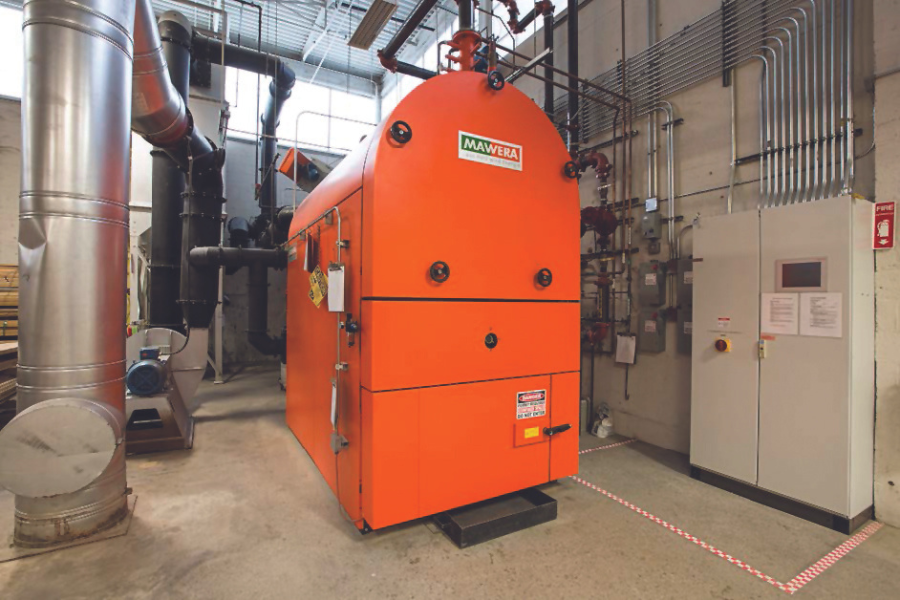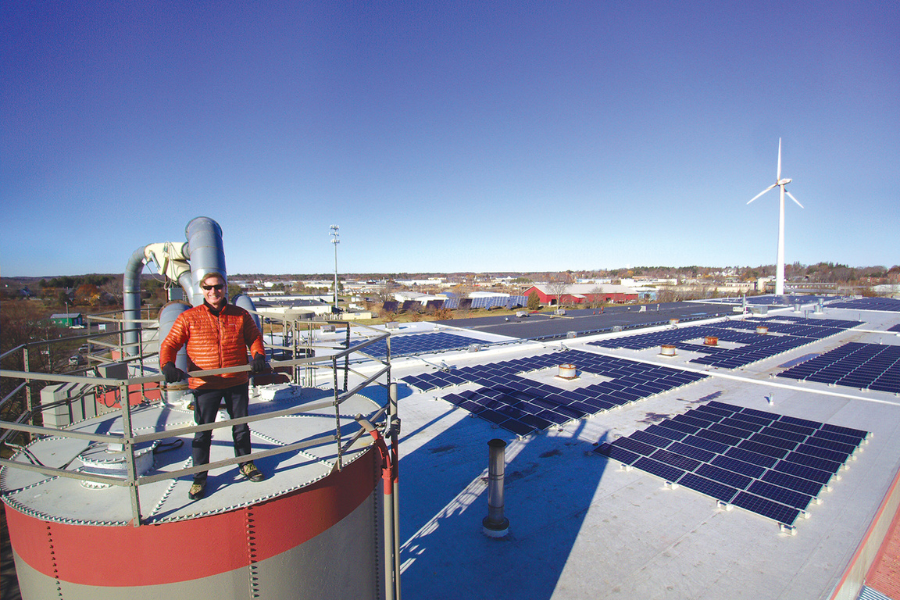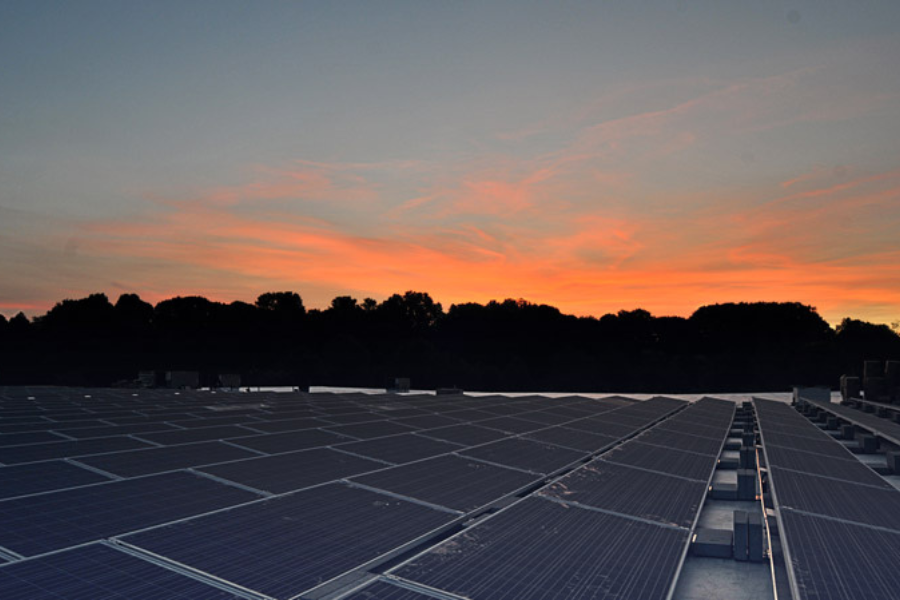Subcontractor Spotlight: Mark Richey Woodworking
In 1981, Mark and Teresa Richey co-founded a full-service woodworking business that designs and builds precisely what their clients want – uber-customized, complex, high-end interiors and exteriors. Having completed more than 1,000 projects, Mark Richey Woodworking’s craftsmanship appears in museums, performing arts centers, academic institutions, residential and commercial buildings, restaurants and retail stores, and corporate offices and boardrooms worldwide. The firm is certified as a Minority/Woman-Owned Business Enterprise and committed to bringing its inclusive subcontracting and hiring practices to the historic Obama Presidential Center project.
Equally impressive is the firm’s dedication to environmental stewardship. In 2005, a major renovation of a 130,000-square-foot abandoned manufacturing building in Newburyport, Massachusetts, set Mark, the woodworking pro, and Teresa, the financial guru, on a path to reduce their carbon footprint. They designed a facility that runs on 100% renewable energy to earn their reputation as an industry leader in sustainability.
For Earth Day, Lakeside Alliance spoke with Mark and Chief Operating Officer, Greg Porfido, about their work on the Center and what inspires them to go above and beyond when it comes to sustainability. Take a look:
What led you to build one of the greenest manufacturing companies in the United States?
Mark: Our company, and me in particular, have always been very much connected to the natural world with a great deal of interest in wild places. I’ve traveled as a mountain climber and seen the degradation of our planet firsthand. So, as a company, the best way to make an impact on the environment and be better stewards and conservationists was to start with our business. We were tasked with renovating an old building. We looked at a long-term plan for a manufacturing facility 100% powered by green energy. We started with our heating system, using a biomass furnace that uses waste to heat our facility. That led us to wind. A 300-foot-tall wind turbine produces 60% of the electricity generated on site. The final piece is a rooftop solar array covering 80,000 square feet. The solar is not quite done yet, but we’re continuing to do other energy reduction and potentially more renewable energy projects on site. We’re definitely unique in this regard! We’re constantly working on improving and getting as close as possible to net zero and always looking for ways to recycle things, repackage and source materials that are environmentally friendly.
Greg: We’re certainly unique for onsite power generation. The furnace is a marvel of technology. It’s a super clean-burning, high-efficiency furnace we bought from Europe. Most shops don’t do that.
Aside from being sustainable, what else sets Mark Richey Woodworking apart?
Greg: We’re a group of craftsmen all up and down the line. We all grew up in the shop, so when the architects design something, we’re able to figure out how to build it and execute the vision. We run a gamut of work, but the commonality is it’s usually complex and very customized. We produce everything here onsite with 100 employees and an additional 50 to 100 carpenters employed in the field via subcontractors, and we prefabricate the work and make it install-friendly.
Mark: I’ll add that we are woman-owned and a small business. Teresa, my wife and the majority owner, is from Peru. We have done a lot of travel together and have been involved in impactful projects through our outreach, from building a school in Afghanistan for girls to the largest public hospital in Haiti after the earthquake. Teresa is a big part of our commitment to outreach.
What is your role in the Obama Presidential Center project?
Greg: We’re working on the Library and a lot of the space between the Library and the Auditorium. We’ve been on the project for almost a year and a half, so we’ve been busy drawing and doing design assist, ideating, developing mockups and working with designers to figure out how certain things are going to be built or the practical application. We’ve visited the site several times and also had project teams come visit us in the shop.
How is the work you are performing on the Center tied to sustainability?
Greg: Sourcing responsible, FSC (certified) materials is a big part of it. We also ensure that the type of adhesives and materials we use don’t pollute the interior environment.
Mark: Architects are considering the sustainability of their materials more and more, which we encourage. They come to us wanting to use the best materials from an environmental point of view as they can, so we work with them to find solutions and create specifications like extracting timbers in an environmentally friendly and renewable way. We’re able to help find materials that are underutilized, or not endangered or taken from areas of the world with heavy impact.
How has the industry changed to become more sustainable? Have you seen an increased focus in recent years?
Mark: Wood has an advantage as one of the only renewable construction materials and, compared to metals or plastics, requires among the least amount of waste to bring it from its raw form to its finished form. But the industry needs to continue to manage forests properly and that starts with how we look at wood, potentially deciding to use less popular woods or staying more open-minded about what types we use.
Greg: In some cases, the industry has also responded with domestically harvested products, which generally were not ideal for exteriors, by figuring out ways to treat them, change their molecular structure and make them suitable for use on exteriors. Mark Richey is unique in terms of our culture around sustainability, but the industry has done a lot to provide products that, through the use of certain chemicals and adhesives, improve the environment post construction.
What excites you the most about being a part of this historic undertaking?
Greg: We’re proud of who Obama was. We’re proud of his integrity, because we look for integrity in our team and our leaders. We wanted to be associated with that legacy.
Mark: When we were awarded this project, we definitely uncorked the champagne. It is really exciting not only because it’s the Obama Center, which is very special to us as a recognition and celebration of one of our great presidents, but it’s something we’re very well-suited for and interested in given our minority- and woman-owned business credentials. The unique part about this is the level of attention to detail. We respect that dedication to diversity.
How has your company honored the project’s commitment to diversity and inclusion?
Greg: On the install front, we’ve been very successful. The important thing is making an early commitment because it takes a long time to land the right people onsite at the right time. Especially if they don’t currently exist! You have to get people trained and ready by the time you need them to perform the work.
Mark: Part of our commitment here was to utilize the local workforce with a focus on minority and women employees, specifically on the South Side of Chicago, and to maintain a workforce that was going to be indicative of the kind of minority and women focus that the project has. We work on a fair number of projects with women- or minority-owned components, but can’t think of any of them that showed as much attention and walked the walk through the process like this project has.
Interesting Fact:
The Obama Presidential Center isn’t the firm’s first experience with the 44th President. Its furniture division designed and built the table in the Situation Room, featured in this historic photo.
Credit: Official White House Photo by Pete Souza








